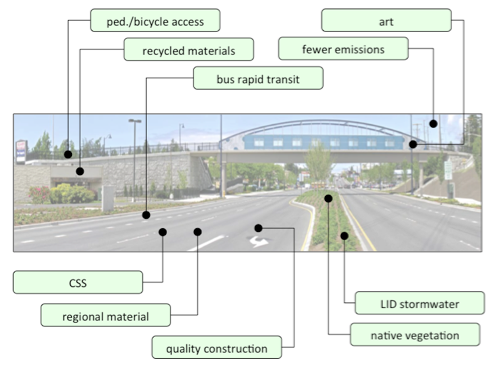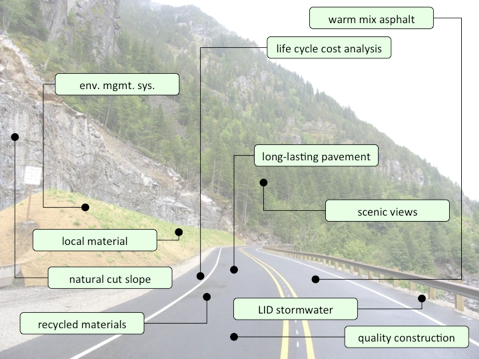Green Construction
RAETEX CRMB has been used in over 70,000mT of asphalt in Qatar since 2012. This translates to approximately 100 kilometers of single lane highway (calculated using an average 5m wide lane and a 50mm surface course mix in Qatar). The estimated number tires recycled and prevented from landfill disposal are in excess of 27,000 (calculated as passenger tire equivalents (PTE) where 1 PTE is approximately 10 kg).
Throughout its duration in Qatar, RAETEX Doha has been actively involved in the development and promotion of other sustainable pavement technologies such as warm mix asphalt and cold in-place recycling. RAETEX works closely with government institutions such as the Ministry of Environment and the Qatar Construction Standards as well as local academic institutions such as Qatar University and Texas A&M University Qatar in order to research, develop and implement these sustainable initiatives and raise awareness of their benefits in the local community.
Greenroads Sustainability Rating System
A “Greenroad” is defined as a roadway project that has been designed and constructed to a level of sustainability that is substantially higher than current common practice (Greenroads, 2013).
Developed in the U.S. in 2007, Greenroads is an award-based, sustainability rating system that can be used to rank, score and compare different road projects for their overall performance toward being more sustainable than an average road project (Greenroads, 2013).
Use of recycled materials such as waste tire rubber earns the highest points possible for a single credit category in the rating system. With two of RAETEX’s personnel being accredited Sustainable Transportation Professionals, RAETEX is a proud member of the Greenroads Foundation, supporting projects that demonstrate a level of excellence in sustainability beyond the average roadway project.


(Steve Muench, Greenroads 2013)
Recycling
It is estimated that there are nearly eleven million tires accumulating in waste stockpiles around Qatar. A tire’s physical structure, durability and heat-retaining characteristics make these stockpiles a major threat to human health and the environment.
Prone to heat retention, tires in stockpiles can ignite and create tire fires that are difficult to extinguish and can burn for months. These fires generate harmful smoke and toxic oils. In addition, illegal tire dumping pollutes ravines, ecosystems, and empty lots, as well as surrounding surface and groundwater supplies.
For these reasons, most states in the U.S. have passed scrap tire regulations requiring proper management of tire stockpiles. Thirty-eight states ban whole tires from landfills and eleven states ban all tires from landfills. As of 2003, the EU-imposed ‘Landfill Directive’ banned the disposal of whole tires in landfills throughout Europe and in 2006, included a ban on shredded tires as well. With new technologies, recyclers are able to reprocess the tires and extract valuable materials such textiles, steel and rubber granulate from the tires. (EPA: 2009)
Recycling waste tires and incorporating the granulated (crumb) rubber into roads is cost effective, reduces the need for synthetic and natural resources by creating a local market for the material, reduces health and safety risks associated with dangerous tire piles and through blending with bitumen, provides performance enhanced roads that can last two to four times longer than conventional roads.

